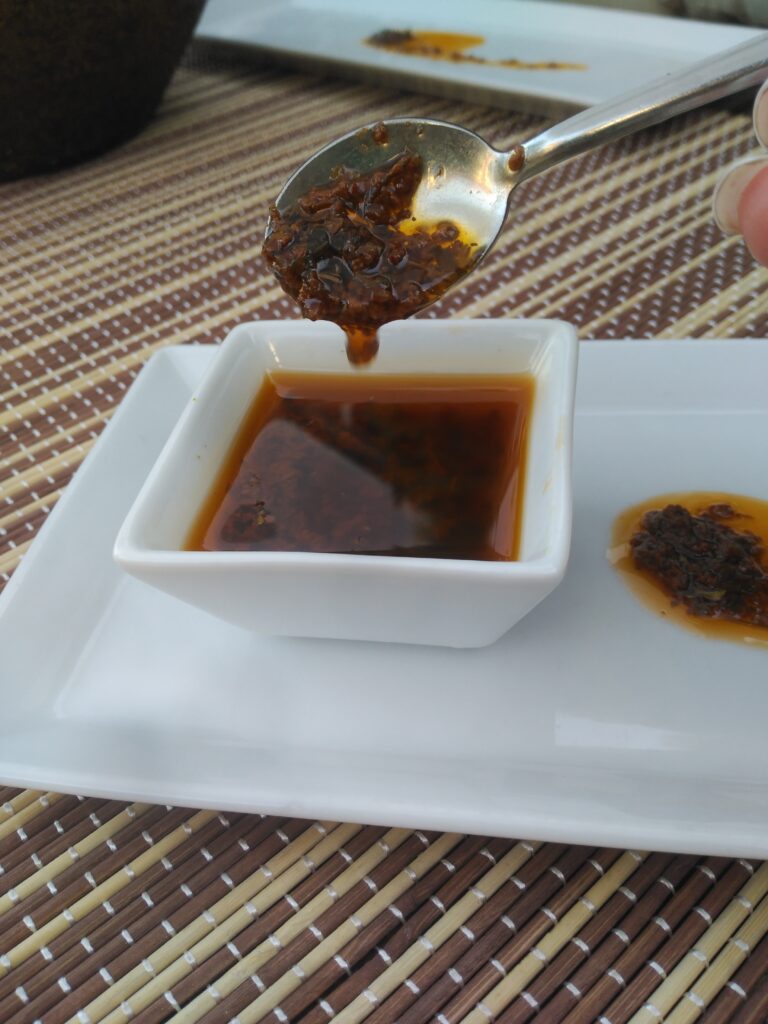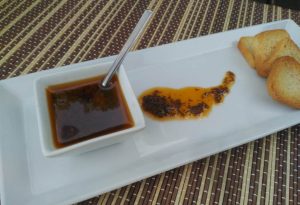We are what we put on our meat
Nobody can dispute the fact that CHIMICHURRI is typically Argentine and identifies us all over the world.
What is difficult is to know the true origin of the recipe and where its peculiar name originates.
During the many years I lived in Patagonia I met and shared good times with descendants of the many Europeans who settled these inhospitable lands when no one else seemed to be interested. The English, Scots, Welsh, Germans, Swiss, French and Irish outnumbered the Spanish and Italians who were a majority in the rest of the country.
GIVE ME CURRY
It was a Welshman, (Nantlais Evans), who, in an “asado” (Ref 33) with friends in 1986 explained the origin of the word “chimichurri”. Very serious, with a wise look on his face and almost as if what he was about to share was a secret, he said:
The British who settled in Argentina in the early years of the 19th century took to the “asado” with no effort at all, but their command of the language lagged behind. They were accustomed to add sauces and gravies to their meat so they created a sauce to go with the local meat that used local ingredients, which, for lack of a better word, they called “curry”. So, when seated at the table they would ask for their sauce saying “GIVE ME CURRY” this developed with some Spanish words into “CHE MI CURRY”. In time, with usage and argentine slang this developed into CHIMICHURRI.
Some time later he confessed that it was something invented by British-Argentine tradition and that it probably was thought up after a good “asado” washed down with copious amounts of wine.
There is another theory
An Irishman who arrived in Argentina some time after 1840 and wanted to enjoy a good “asado” discovered that the locals only added salt on their meat. He was used to putting the then newly developed Worcester Sauce (Ref 44) on his steaks, however this was not available locally, so he asked for a variety of ingredients and seasonings, mixed them and invented a sauce. This gastronomic inventor was called James McCurry, known to his family as Jimmy and to his argentine friends as Jimi Churri. Hence the origin of CHIMICHURRI.
I don’t know of any other theories, so choose whichever you like, learn it by heart and tell it with a straight face and as gospel truth at any get together; it is unlikely that anyone will dispute it or argue with you
But let’s get down to the most important part:
Which is the true recipe for chimichurri? What ingredients and condiments does it require?
The Spanish have difficulties in agreeing on the ingredients of a good “tortilla” let alone the controversial “paella”.
The Italians argue as to which region makes the best pasta or the best pizza.
The Germans quarrel over who makes the best sausages and sauerkraut
The English can’t agree on the best Tikka Massala (ha, ha, ha)
But due to the simplicity of the chimichurri recipe we cannot make too many changes or invent anything new.
There are some very basic rules on how to make it, since what one is after is to add a touch of creativity to the age-old art of roasting meat over flames or coals. The basic fact that we start from is that for a good “asado” all you really need is meat, salt and fire. Chimichurri is born from the desire of some to “tune” the meat. There are those who swear by chimichurri, while detractors or “purists” just use salt.
Below is my personal, SECRET recipe for chimichurri, it is bound to be similar or the same as others which can be found in some book or on the internet, but it is backed by sixteen years experience and praised by thousands of people who have eaten at our restaurant Tehuelche.
I am proud of the positive reaction to this recipe, though I confess to belong to the “purists” … just meat and salt!

A CHIMICHURRI with 10 ingredients and also 10 out of 10 marks!
First the list of things we must have to hand
Mixer-beater-food prosessor-Thermomix or something similar.
100g of parsley, we will just use the leaves.
5 garlic cloves
1 level soupspoon of powdered bay leaf (Ref. 48)
1 level soupspoon of table salt
1 heaped soupspoon of ground black pepper
4 heaped soupspoons of ground paprika (Ref. 58)
4 heaped soupspoons of ground argentine pepper or similar (Not too hot)
8 heaped soupspoons of oregano leaves.
300 ml of wine or apple vinegar
800 to 1000 ml of sunflower oil (Ref. 84)
Preparation
Grind the parsley leaves and the garlic in 200 ml of vinegar, at medium speed using a mixer with a 2 litre container. Add 500ml of oil and mix slowly for 30 seconds.
Add all the other ingredients, the rest of the vinegar and oil and mix at a very low speed for two minutes until the contents are thoroughly blended.
Pour into a container large enough to store and pour the chimichurri. Add more oil if it thickens in time.
Before using shake thoroughly, make sure the lid is on tightly otherwise you may have a long lasting red stain on the kitchen ceiling. Put some in a small cup with a teaspoon to be served on bread or on the meat.
Important tip: Don’t put chimichurri on the meat whilst cooking, the ingredients tend to burn on the grill and produce a bitter taste.
(Ref.33)
Asado is the Argentine barbecue. Barbecue does not really describe a real “asado”. You’ll just have to try one!
(Ref.44)
Created or re-discovered by Messrs. Lea & Perrins in 1835 (see Google). It became famous and began to be exported in 1839.
(Ref.48)
If you don’t have ground bayleaf, add 5 whole leaves in the container where you are keeping the chimi.
(Ref 58)
Change for two tablespoons of hot peppers (cayenne) ONLY if you have an Indian or Mexican palate.
(Ref 84)
Maize oil is best. Olive oil is not recommended as it makes it too bitter.





